
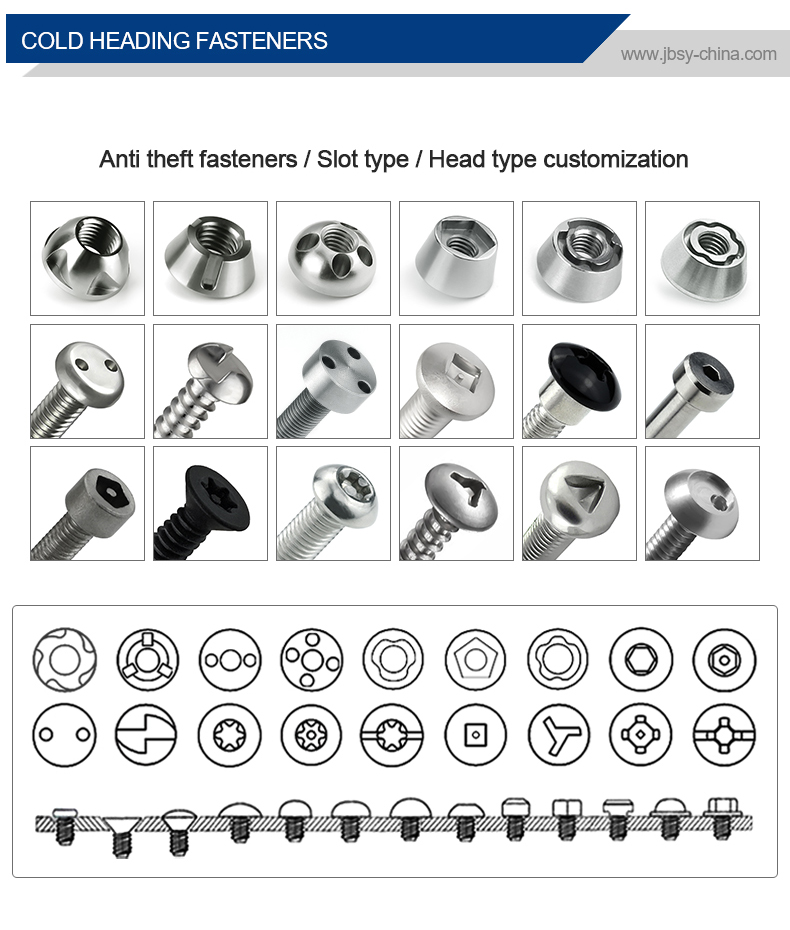
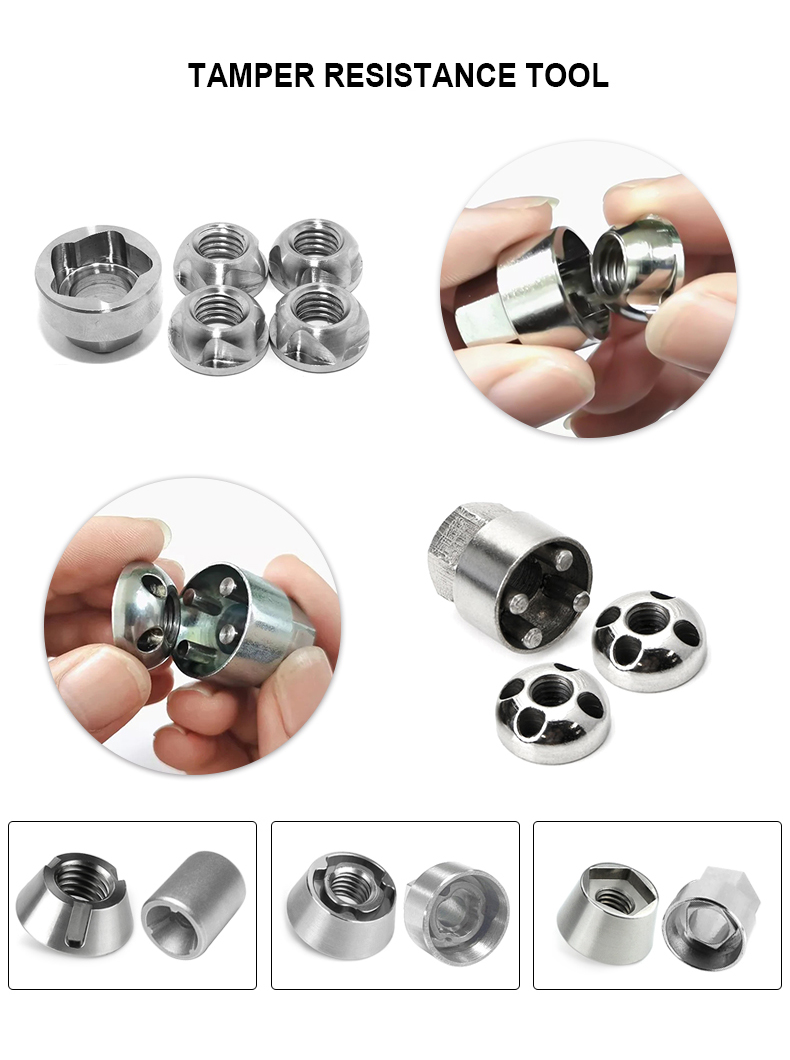
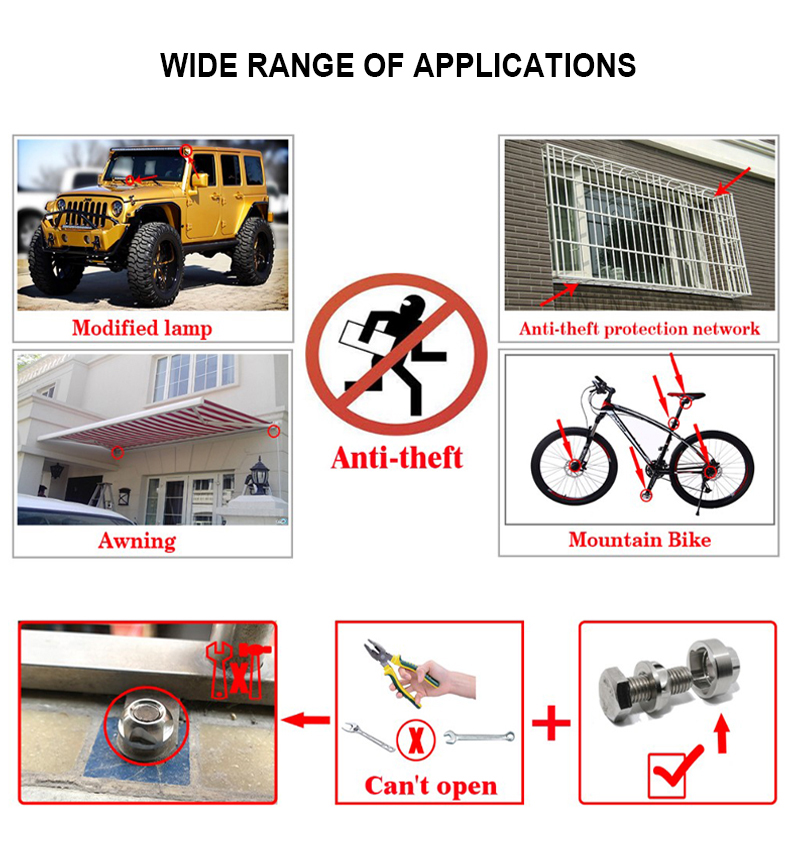
ボルトとナットの締結と開放は、非標準的な設計を採用し、一致する。
非標準の工具は、開口部と締結部の問題を解決するために使用される。一般的に、他の
レンチを挿入することはできません。ナットとボルトの外観デザインでは、非標準のスロット、
開口または五角形、七角形、九角形または特注の対応溝工具
盗難防止効果が非常に高い
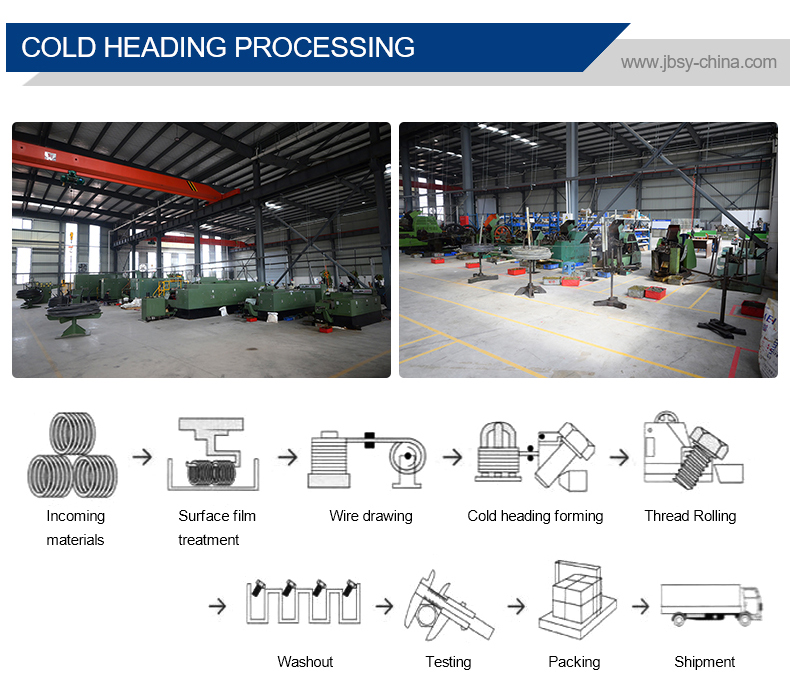
冷間圧造加工は、切削の少ない、あるいは切削を必要としない新しい圧造加工のひとつである。
金属。の作用による金属の塑性変形を利用した加工法である。
外力を受け、金型の助けを借りて、金属の体積を再分配し、移動させる。
必要な部品やブランクを製造します。冷間圧造工程は、標準的な
ボルト、ネジ、ナット、リベット、ピンなどの留め具。
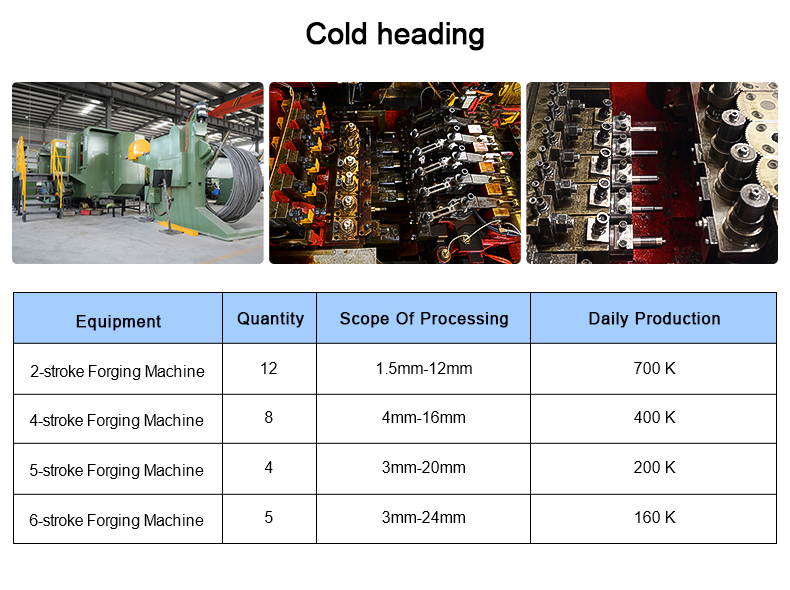
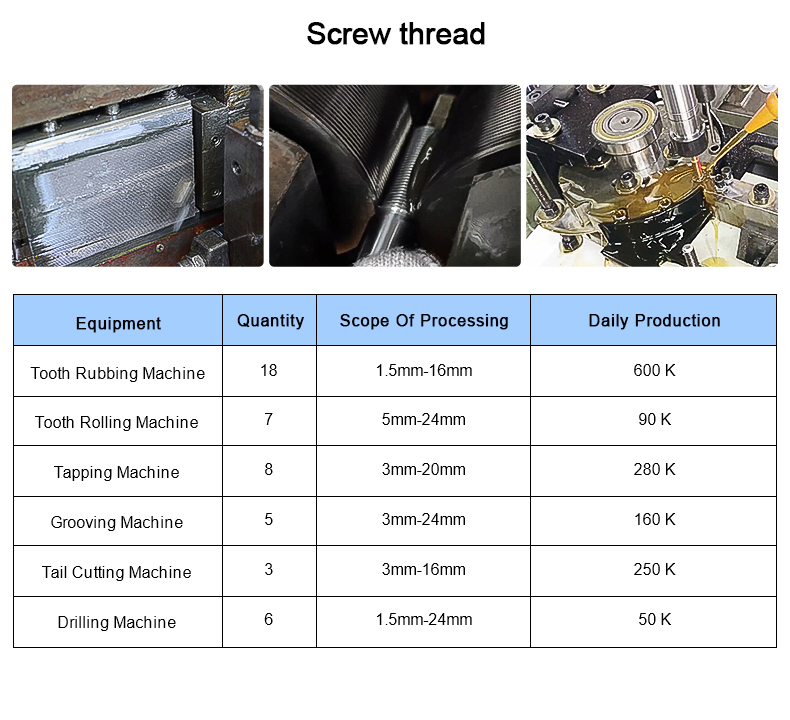
Hexagonal Nylon ロックナット (commonly called Nyloc nutsの一種である。 self-locking nut designed to resist loosening caused by vibration, shock, and dynamic loads. They feature a 六角ヘッド for tool engagement and a ナイロンインサート that creates friction against the bolt threads, ensuring a secure, long-lasting connection.
主な特徴とデザイン
-
六角ヘッド(6面)
-
Standard wrench/socket compatibility (e.g., ISO, DIN, ANSI standards).
-
で利用可能 metric (M3, M5, M6, etc.) そして インペリアル(UNC/UNF) thread sizes.
-
-
Nylon Insert (Locking Mechanism)
-
A ナイロン6,6リング (usually blue or white) is crimped into the top of the nut.
-
When threaded onto a bolt, the nylon deforms, creating frictional resistance to prevent loosening.
-
Effective up to ~120°C (250°F); degrades at higher temperatures.
-
-
素材と仕上げ
-
ナットボディ: Carbon steel (Grade 5/8), stainless steel (A2/A4), or brass.
-
コーティング: Zinc-plated (corrosion-resistant), black oxide, or plain.
-
-
スレッドの種類
-
Coarse (standard) or fine threads, depending on application needs.
- 六角ナイロンロックナット
-
一般的なアプリケーション
-
自動車 (engine components, suspension, brackets)
-
Industrial equipment (pumps, motors, conveyors)
-
電化製品 (PCBs, housings)
-
Furniture & DIY projects (振動が懸念される場合)
規格と仕様
-
DIN 985 (Metric nylon insert lock nuts)
-
ISO 7040 (Prevailing torque type, non-metallic insert)
-
ASME B18.16.3M (Metric series lock nuts)
インストールのヒント
-
Do not over-tighten – Excessive torque can damage the nylon insert.
-
Avoid lubricants on threads – Reduces locking effectiveness.
-
Check for wear – Replace if the nylon appears cracked or flattened.






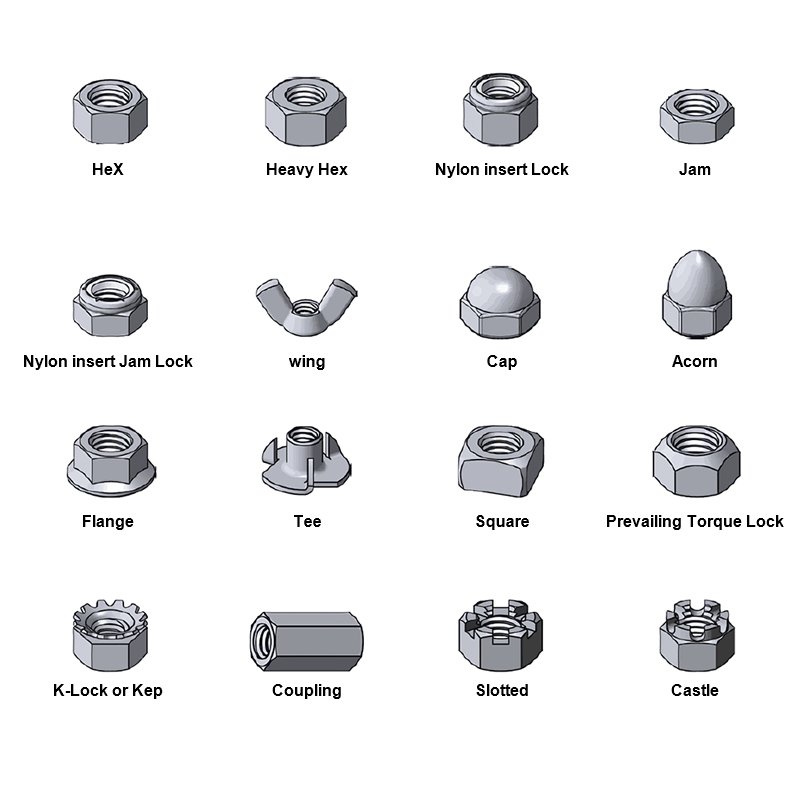
レビュー
レビューはまだありません。